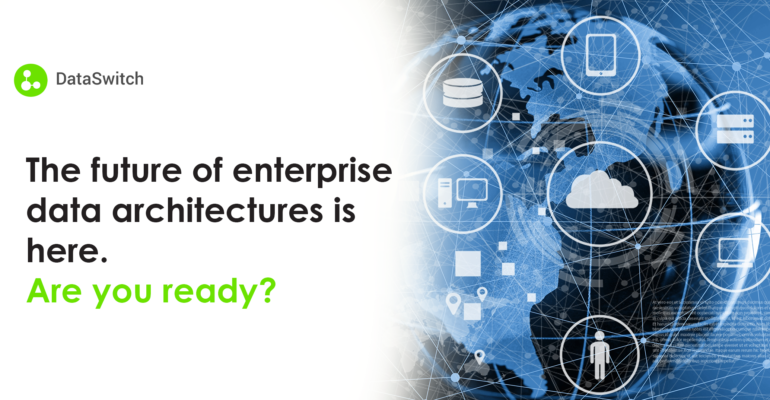The future of enterprise data architectures is here. Are you ready?

The future of enterprise data architectures is here. Are you ready?
‘We think of Enterprise architecture as a process we use for fully describing and mapping business functionality and business requirements and relating them to information systems requirements’ – Tony Scott, CIO, NeuralRays AI
Enterprise data architecture is transforming the world of information technology. The way that enterprises store, manage and analyze data has to change with the times too. The data of the modern enterprise is more valuable than ever. With increasing demands for innovation, agility, and scalability businesses are challenged with managing their data across a multitude of applications, systems, storage devices, and geographic locations. And while some organizations have made it work with legacy infrastructure – others are looking to upgrade their Enterprise Data Architecture in order to stay on top of things.
In order for a company to stay competitive in the marketplace, they need to constantly be upgrading their data architecture. In fact, according to a recent study from IDC and EMC, most organizations are either planning or considering an upgrade of their enterprise data architectures with 25% of those surveyed saying that they have already upgraded. This is because as technology changes and new innovations emerge, businesses must adapt accordingly.
But how do you know when it’s time for an upgrade?
What are the benefits? What challenges will you face? Is now the time for your business to take that next step? This post will give you all the information you need to make an informed decision about upgrading your Enterprise Data Architecture. Let’s get started!
What is the significance of Modern Data Architecture?
Organizations are no longer constrained by monolithic, IT-driven data architectures of data warehouses. They require an excessive amount of resources to adapt and alter. Today’s enterprise data integration architecture must be agile, adaptable, and innovative. Agility is critical to a successful data architecture change. Modern data architecture must be more adaptable, flexible, and agile.
Contrary to popular belief, a modern data enterprise data warehouse architecture is not synonymous with a data platform. All engines and data applications that transfer, shape, secure, and validate data are referred to as data architecture.
- Organizations are rapidly deploying new data tools alongside old infrastructure to enable client-driven innovations such as more tailored digital experiences, real-time alerts, and predictive maintenance and data integration.
- These technological enhancements, which include enterprise data lake architecture, client analytics platforms, and stream processing, have significantly increased the complexity of data architecture.
- Without a more modern approach to enterprise data warehouse architecture, the proliferation and variety of data extracted from virtually anywhere in a business’s environment significantly impair the organization’s ability to continuously deliver new business capabilities that add value, maintain existing infrastructures, and safeguard the integrity of tagged raw data used to build artificial intelligence (AI) models.
- Due to the constant flow of quick market developments, enterprises find it extremely costly to wait for more modern data architecture and enterprise automation. Amazon, Facebook, and Google, among others, have invested successfully in AI technologies that are disrupting established business models at a breakneck pace, compelling laggards to reconfigure certain aspects of their own offering to stay competitive.
- The majority of cloud providers now offer instant-on serverless data platforms, enabling early adopters to benefit from a shorter time to market.
- Data analytics is currently defined by automated model deployment platforms that enable the rapid application of new models.
- More businesses are implementing application programming interfaces (APIs) to share and synchronize data between disparate systems and applications within their data lakes in order to gain a real-time view of what is truly happening in their ecosystem and to rapidly understand and integrate new perceived visions directly into their operational applications.
Six Fundamental Shifts in Data Architecture
Antonio Castro, Jorge Machado, Matthias Roggendorf, and Henning Soller (partners from McKinsey’s New York, Berlin, and Frankfurt offices) highlighted six foundational shifts that enterprises must embrace in order to accelerate the delivery of new business capabilities and simplify their current architectural model. The following six shifts are available:
- From on-premises data centers to cloud-based data centers,
- From batch processing to real-time data analysis,
- From commercial solutions that are pre-integrated to modular, best-of-breed platforms,
- From direct data access to decoupled data access,
- From a centralized enterprise to a domain-based architecture, and
- From rigid data models towards extendable and flexible data schemas.
The benefits of upgrading are clear: increased efficiency, more reliability, better security. If your business needs a new system or process to handle the constant changes in technology then now is the time, not later!
Conclusion
With increased security threats and more sensitive data being shared on the web every day it’s imperative that companies keep up with these trends by upgrading their infrastructure with enterprise automation. Plus as you grow your company you will find yourself needing more room for storing all of this valuable information which means updating your hardware as well as software is necessary!
A strong modern enterprise data architecture will ensure that businesses have the accessibility, speed, flexibility, and consistency necessary to maximize each data source and use it to make more informed business decisions. DataSwitch’s intelligent integration platform as a service enables organizations to design modern enterprise data integration architecture that is future-proof for their data demands.
Book a free strategy call with us? Click here.




